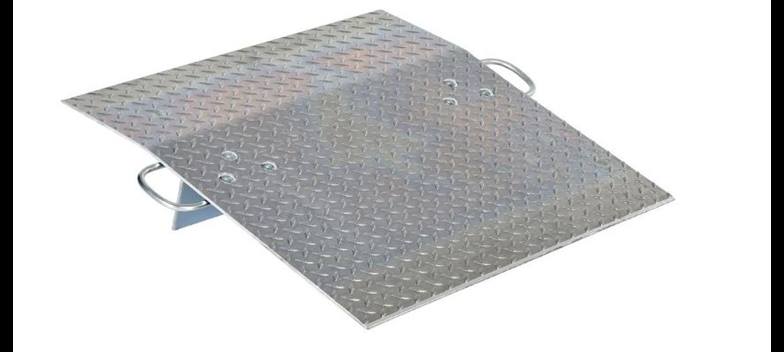- Home
- News
- Dock Levelers vs Dock Plates: What’s the Difference?
Dock Levelers vs Dock Plates: What's the Difference?
The terms “dock plates” and “dock levelers” are often used interchangeably in the warehouse operations industry, and while they serve a similar purpose, there are major differences in their application and functionality.
An incorrectly outfitted loading dock can create huge problems that impact operations and employee safety. Whether you’re planning for space or budget, confusing a dock plate’s application for a dock leveler can negatively impact loading dock efficiency and productivity.
Find Out What Type of Loading Dock Leveler is Right For You
Dock Plates
The goal of a dock plate is to bridge the gap between a trailer and the loading dock. This is the same general goal of a dock leveler, but that’s where the similarities end.
Dock plates are typically constructed of aluminum and designed to be portable, as opposed to permanent levelers. Due to their lightweight construction and portability, dock plates can only accommodate lighter loads, limited to pallet jacks, dollies, panel trucks, trolley carts and other non-powered loading applications.
In addition to portability, an important distinction between dock plates and dock levelers is the loading dock drop-off, or run-off, safety features. While featuring locking legs to prevent the plate from shifting out of place while in use is beneficial, the standard safety feature to prevent run-off on a dock plate is a suboptimal yellow border painted on the sides. This yellow border is a nice visual alert, but it lacks a physical barrier.

Dock Boards
While discussing dock plates, it’s important to discuss another piece of gap-bridging equipment that can be confused with dock plates or levelers - dock boards.
Similar to dock plates, dock boards are made to be portable. The biggest difference between the two, however, is the intended application. Dock plates are designed for lighter loads while dock boards are designed to handle the weight of heavy machinery, like forklifts.
Often made of steel, the functionality is similar to dock plates, but since its created for use with heavy-duty machinery, dock boards feature steel curbs on opposite sides and a steel chain to prevent loading dock run-off.
Dock Levelers
As opposed to dock plates and dock boards, dock levelers are permanent fixtures installed on the loading dock bay. Created for use with forklifts and other types of heavy-machinery, dock levelers are the optimal choice for durability, safety and efficiency when bridging the gap between the trailer and the dock.
One of the major benefits of utilizing a Rite-Hite dock leveler over plates or boards and competitive levelers is that loading dock levelers provide a smooth transition for forklifts, even on out of balance trailers, with a constant radius rear hinge, two-point crown control, and an optimized lip chamfer. This decreases the jarring effect created by bumps and gaps, known as dock shock.
That jarring effect has the potential to injure workers, damage your loading dock equipment and potentially harm the cargo being transported. Additionally, dock levelers are better suited to protect against drop-off accidents and can facilitate unobstructed end loading. In contrast, dock plates and boards don’t have the stability and functionality to reduce these risks as effectively as dock levelers.
There are also different types of dock levelers to choose from, depending on your loading dock operation applications. Dock levelers from Rite-Hite include hydraulic, mechanical and air-powered styles that boast the additional benefit of pairing with other loading dock equipment, like vehicle restraints and communication systems, creating synergy throughout the facility.
Dock plates and dock levelers both serve a common purpose, but their application differs in regards to productivity and efficiency along with space requirements and load capacity. Dock levelers are the preferred choice for optimal safety, efficiency and ability to handle heavy loads and equipment. Dock plates are a portable option for ease in loading and unloading light-weight loads. These two pieces of loading dock equipment are similar, but they are not to be confused.
If you’re in the market for loading dock equipment to bridge the gap between trailers and the loading dock, knowing the difference between dock plates and dock levelers will allow you to save time and energy so you can focus on choosing the equipment that is the right fit for your applications and objectives.
Increase Safety and Efficiency at the Loading Dock with Dock Levelers Today
